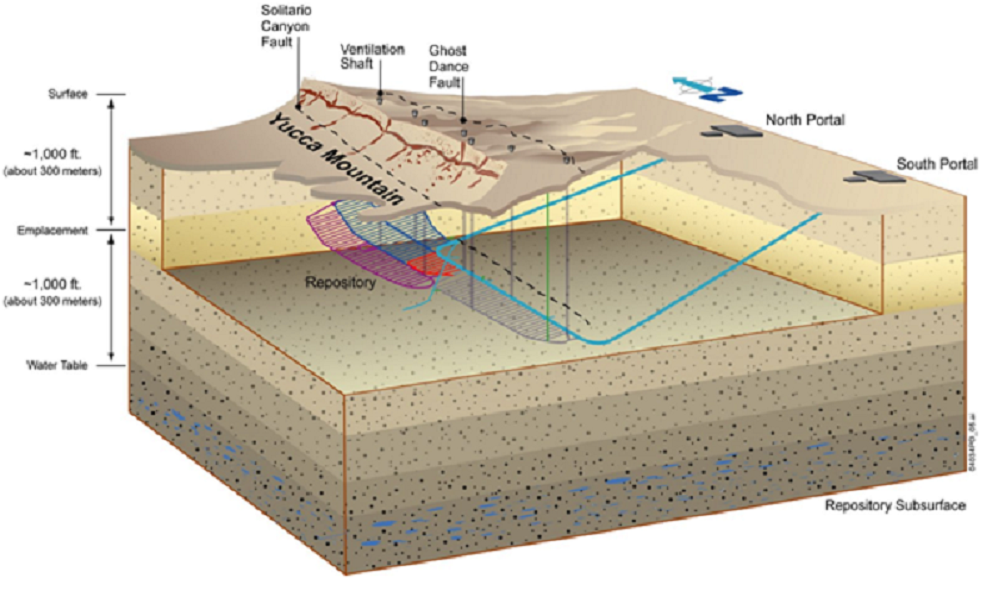Part Two of Two Parts (Please read Part One first)
During 2015, the Bipartisan Policy Center consulted nuclear experts and issued a report that called for restarting the Yucca Mountain Geological Repository project. The report listed fourteen steps that would have to be taken in order to restart the repository project and move forward with the NRC licensing process. The report pointed out that Yucca Mountain was the only legally sanctioned plan for a repository and that billions of dollars had already been invested in studying Yucca Mountain. Taking any other approach would take decades and require the expenditure of billions of more dollars. On the other hand, billions of dollars might be wasted as the state of Nevada is staunchly opposed to the Yucca Mountain repository and would fight it in court every step of the way.
An Environmental Impact Statement supplement for the Yucca Mountain Repository was issued in May of 2016. This report said that the Repository would not endanger the environmental around Yucca Mountain. In order for the licensing of Yucca Mountain to be finalized for such a repository, an adjudicatory hearing must be held. Such a hearing remains suspended.
The U.S. is committed to creating a geological repository at a site other than Yucca Mountain for spent nuclear fuel but the best estimate places the completion of any such repository at 2050. The DoE has been working on finding a location that is suitable from a geological perspective and also acceptable to the local population of the area. This is referred to as consent based siting. Some communities has expressed interest.
In the past few years, there has been research that has indicated that some of the assumptions that have be standard in evaluating the migration of ground water in and around salt formation may have not taken some factors into account. Some studies have shown that ground water at lower depths may move through salt deposits more quickly than previously thought because of the alteration of the crystal matrix by the pressure. Other studies have suggested that more ground water may migrate through shallow salt deposits that older studies indicated. If ground water penetrated a nuclear waste repository, there is a possibility that nuclear materials could be leached out, moved and concentrated to the point where a critical reaction could occur. Such an event could result in geysers of superheated radioactive steam reaching the surface and threatening the ecosystem.
It does not appear that we really know enough about geology and nuclear waste repositories to be confident that estimations of safe storage of spent fuel and other high-level radioactive waste for a millions years are correct. Considering all the legal, technical, economic, and political issues that surround the safe permanent disposal of the spent nuclear fuel from U.S. nuclear reactors, perhaps the best solution is to transition away from nuclear power as quickly as possible to sustainable alternative energy like wind, solar, water and geothermal sources.
With respect to the existing waste, drilling deep holes in bedrock and dropping the spent fuel assemblies down the holes seems like the best alternative.
Yucca Mountain cutaway diagram:
